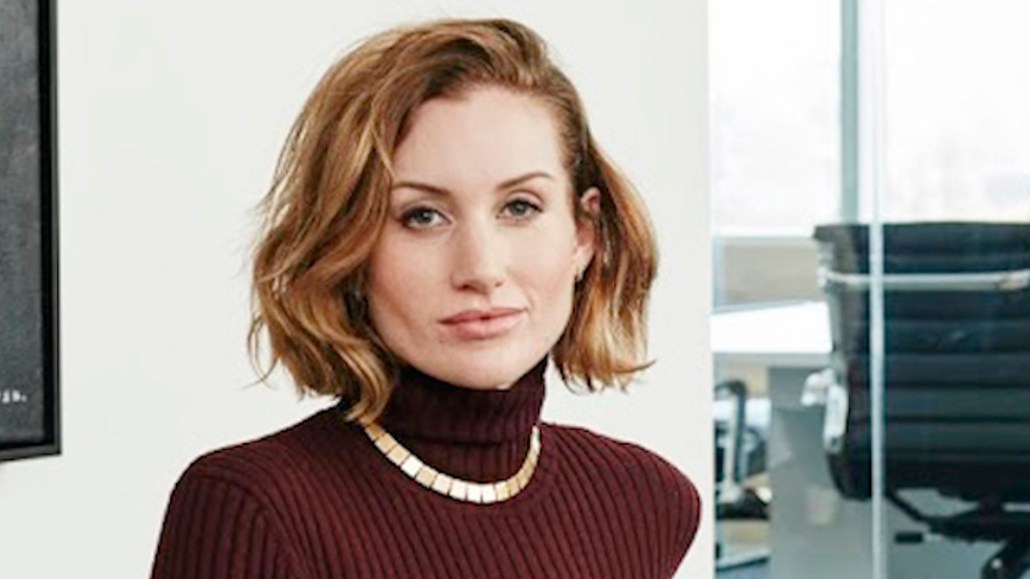Save 50% on a 3-month Digiday+ membership. Ends Dec 5.
Clique co-founder Katherine Power on how to succeed in a new era of digital media

As one of the earliest lifestyle publishers to successfully marry editorial content to e-commerce, Clique Brands Inc. — formerly Clique Media Group — is focused on continuing to find new ways to use digital tactics to strengthen this relationship.
With the combined business acumen of co-founders Katherine Power and Hillary Kerr, Clique found mass appeal when it launched the Who What Wear clothing collection for Target in 2016, a partnership that has since evolved to include spinoff lines, like its recently launched activewear line JoyLab for Target. Since then, Clique has strategically sought out ways to build the business, acquiring editorial properties like College Fashionista and launching verticals like its wellness site, The Thirty. Now Clique is gearing up to launch its first beauty line later this year, and as the brand continues to expand its product inventory, it’s focusing on how to better use data to inform both editorial content and product development.
We asked Power to share some of the latest happenings at Clique, during her break from overseeing a promotional photoshoot in Lower Manhattan for the next Who What Wear for Target collection. The responses have been lightly edited for clarity.
What role does consumer data play in designing the Who What Wear collections?
The development of our product line is super driven by our consumer. We’re engaging them throughout the process. We have a direct message group with our most engaged people around the collection on Instagram. We send photos of prints and patterns, and ask them which they like best, or we might test a new silhouette that we’re thinking about making. People are able to answer us directly and specifically about what they might like or not. Across all of our brands and communication platforms, we’re trying to form a one-to-one connection and have that conversation directly with the user instead of a push-it-out content model.
Why is direct communication on social media so important?
We’ve been doing some version of that for a while, through the comment section of Instagram, on the website, or we’ll send out a survey in a newsletter testing several different types of skirts or shoes. This takes it one step further, where we can talk directly to them. We have private Facebook groups where editors go and can talk to this very engaged community to incubate content ideas. We just created a message bot on Facebook where you can connect with a Who What Wear editor and have a very specific conversation. For example, yesterday, I asked an editor what I should wear to a black tie wedding.
What else informs your collections?
We drive the sales of about 20,000 different products per month, so we can see at every price what’s converting and what’s not, which silhouette is working, what material, what colors. All of that is given to our design team, and it’s their responsibility to forecast based on the design cycle and use their creativity. As a collection comes out and we see something is having trouble selling, we identify that maybe it’s missing some context — an occasion, what type of event to wear it to — so we can go back and raise awareness through editorial content to drive more sales.
Ad position: web_incontent_pos1
How has Facebook de-emphasizing media content on its newsfeed impacted Clique’s editorial properties and how you market your products?
We still put out content there, but we’re super aware of the algorithms. We’re just re-tailoring our strategy to have a more organic connection with the users and to abide by [Facebook] rules. Our job is to not be super dependent on it, and we’re not. I think we have a good, healthy referral of traffic.
Running a media company is no easy task. What’s next on your priority list for Clique?
We’re at such an evolution point. It’s kind of like the spot we were in 12 years ago. At the time, we were in print, and we felt compelled to rethink the way women would consume content and shop for products, and how that would be monetized. We were really able to lead the charge on what is now called native content, and get a lot of luxury fashion retail brands to advertise on the internet. We’re at another evolution point where the monetization of media is changing and we all need to change the way we do things.
More in Media

What publishers are wishing for this holiday season: End AI scraping and determine AI-powered audience value
Publishers want a fair, structured, regulated AI environment and they also want to define what the next decade of audience metrics looks like.

Digiday+ Research Subscription Index 2025: Subscription strategies from Bloomberg, The New York Times, Vox and others
Digiday’s third annual Subscription Index examines and measures publishers’ subscription strategies to identify common approaches and key tactics among Bloomberg, The New York Times, Vox and others.

From lawsuits to lobbying: How publishers are fighting AI
We may be closing out 2025, but publishers aren’t retreating from the battle of AI search — some are escalating it, and they expect the fight to stretch deep into 2026.
Ad position: web_bfu





